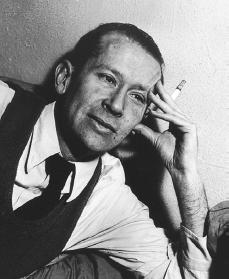Structure
the arrangement of materials within a work; the relationship of the parts of a work to the whole; the logical divisions of a work. The most common units of structure in a poem are the line and stanza.
A Connotation of Infinity
E. E. Cummings
a connotation of infinity
sharpens the temporal splendor of this night
when souls which have forgot frivolity
in lowliness,noting the fatal flight
of worlds whereto this earth’s a hurled dream
down eager avenues of lifelessness
consider for how much themselves shall gleam,
in the poised radiance of perpetualness.
When what’s in velvet beyond doomed thought
is like a woman amorous to be known;
and man,whose here is alway worse than naught,
feels the tremendous yonder for his own—
on such a night the sea through her blind miles
of crumbling silence seriously smiles
The structure of a poem is the arrangement of materials within a work; the relationship of the parts of a work to the whole. The structure of the poem “A Connotation Of Infinity” by E.E. Cummings cannot be classified under a certain type. The syntax used varies throughout the poem, as well as the length of the stanzas. The syntax varies from four words to nine, and the stanza lengths vary from one line to three lines.
"Be of love a little more careful than of anything." ~E. E. Cummings
E. E. Cummings

Edward Estlin Cummings was born to a well-known family in Cambridge, Massachusetts, on October 14, 1894. His father, Edward, was a professor at Harvard University and later the nationally known minister of Old South Church in Boston, Massachusetts. His mother, Rebecca, who loved to spend time with her children, played games with Cummings and his sister, Elizabeth. It was Cummings's mother who introduced him to the joys of writing. Cummings wrote poems and also drew as a child, and he often played outdoors with the many other children who lived in his neighborhood. He also grew up in the company of such family friends as the philosophers William James (1842–1910) and Josiah Royce (1855–1916). He graduated from Harvard University in 1915 and then received an advanced degree from Harvard in 1916.
Cummings did not "develop" as a poet either in terms of ideas or of characteristic style. However, between the publication of his first volume and his final, called 73 Poems (1963), his work does show a deepening awareness and mastery of his special gift as poet of the mysteries of "death and forever with each breathing." His finest single volume is often said to be 95 Poems (1958). Cummings's Collected Poems was published in 1960.
In addition to the works mentioned, Cummings published several other experimental plays, a ballet, and some fifteen volumes of verse. Shortly before his death at North Conway, New Hampshire, on September 3, 1962, Cummings wrote the text to accompany photographs taken by his third wife, Marion Morehouse. Titled Adventures in Value (1962), this work is a good example of his lifelong effort to see intensely and deeply enough to confront the miracles of nature. If only a tenth of his poems should be thought worthwhile, Cummings will have been established as one of the more lasting poets America has produced.
(http://www.notablebiographies.com/Co-Da/Cummings-E-E.html)
